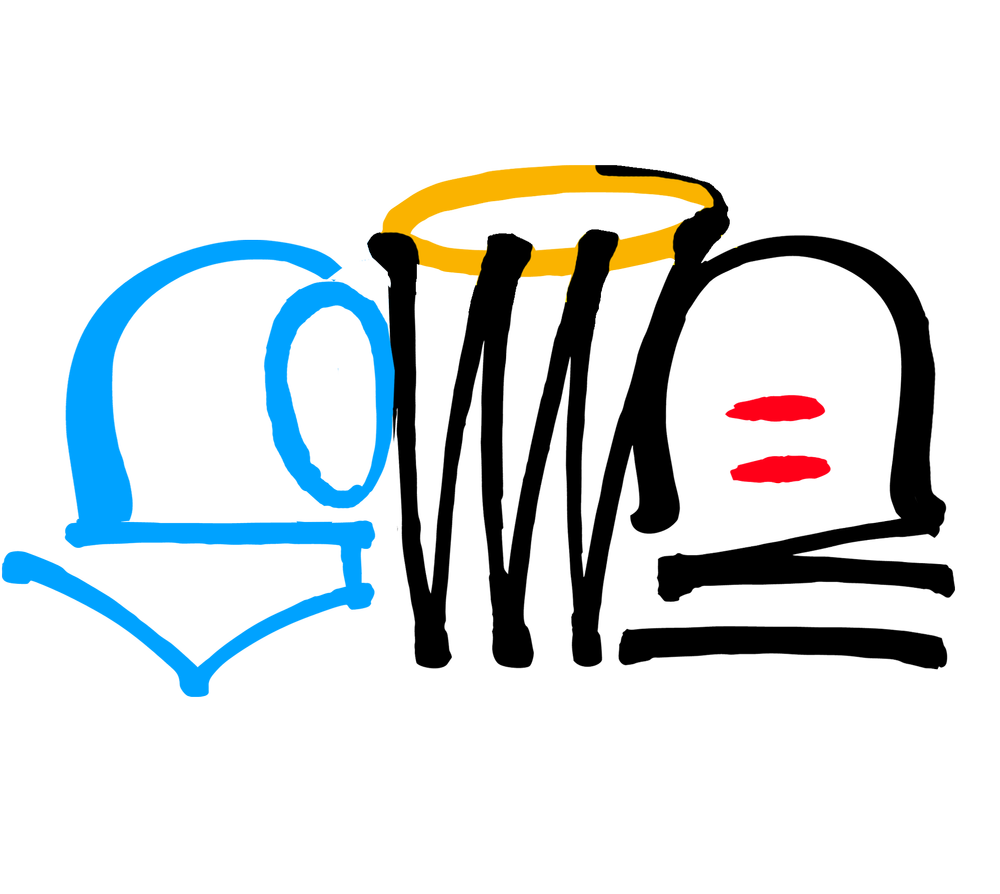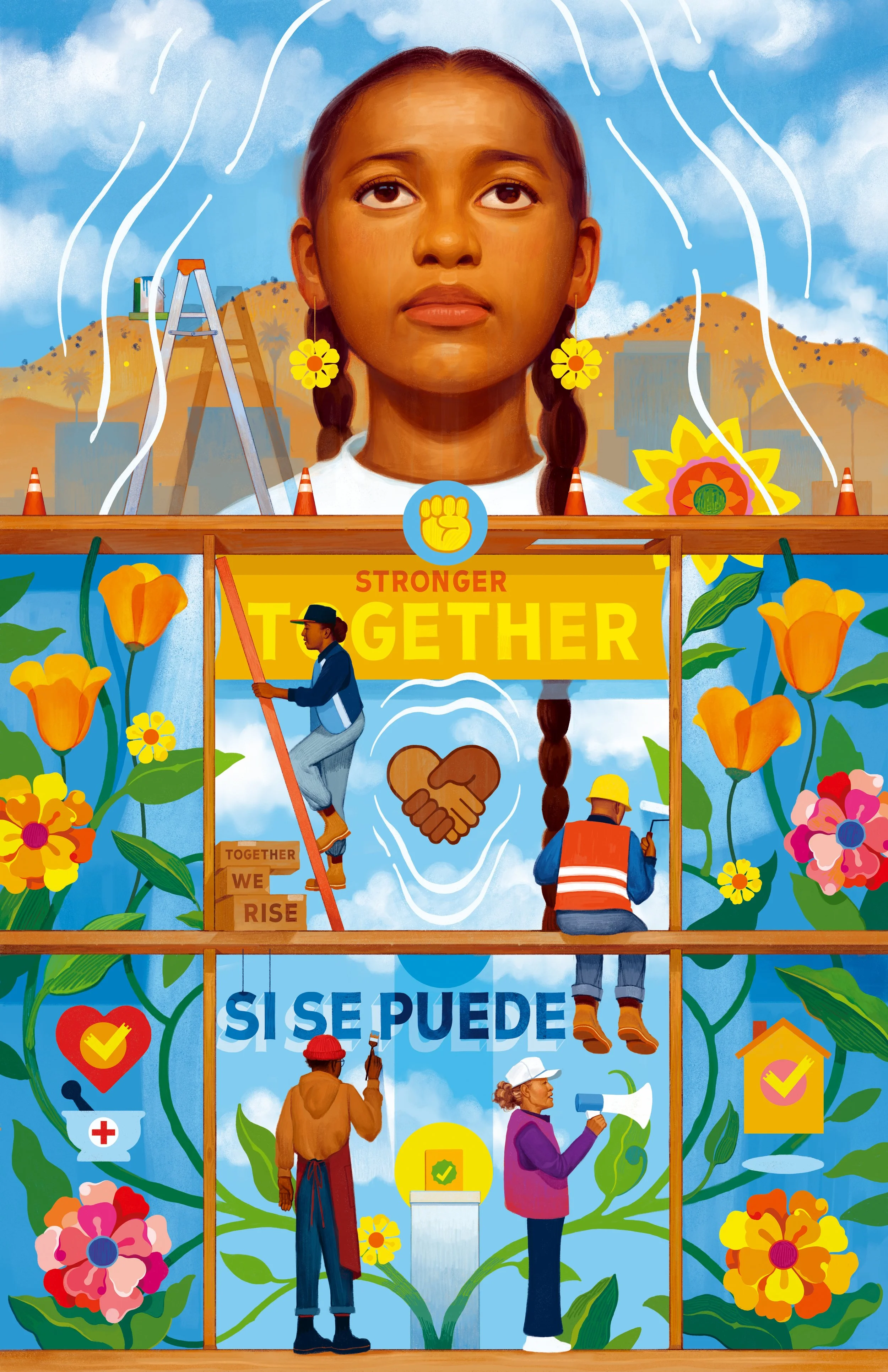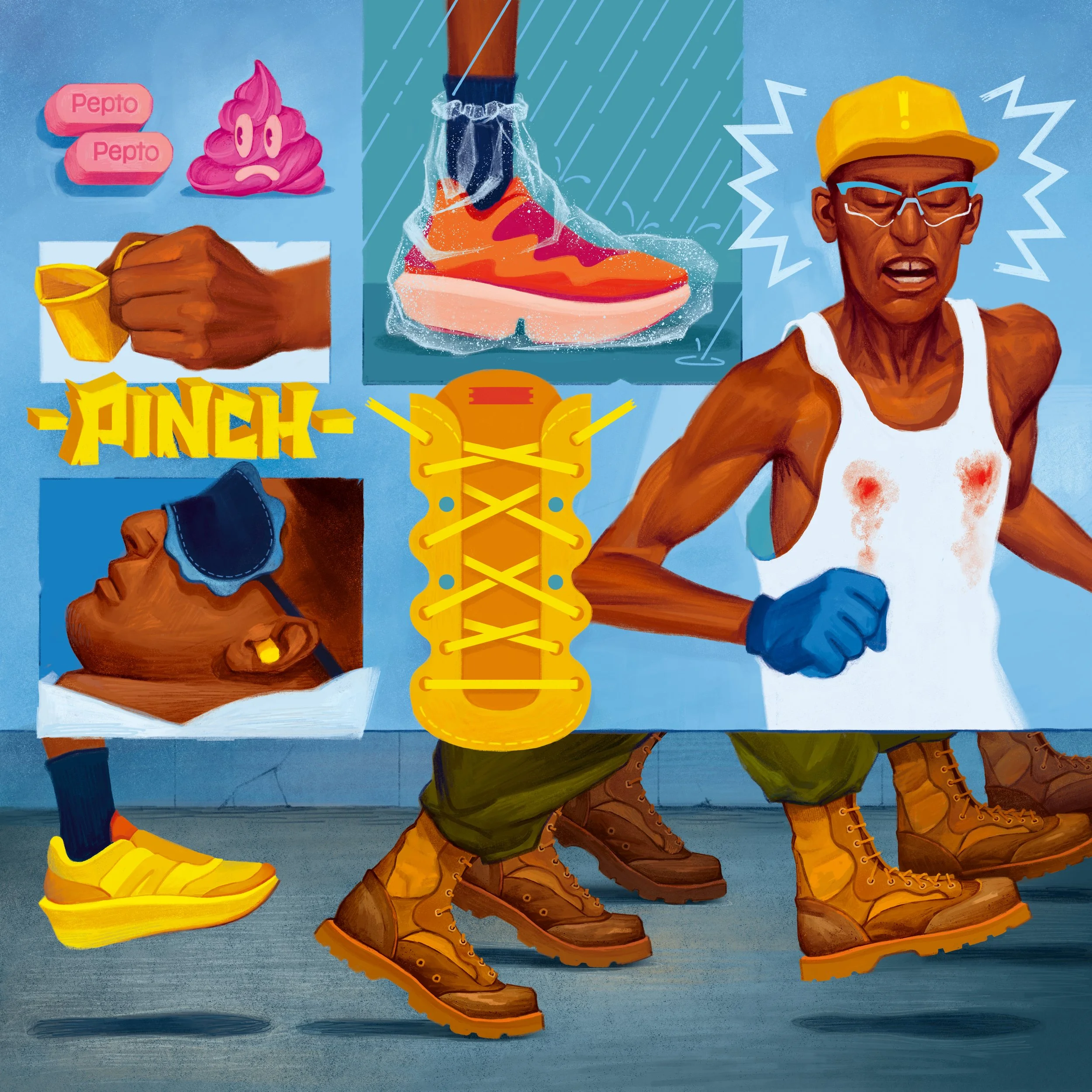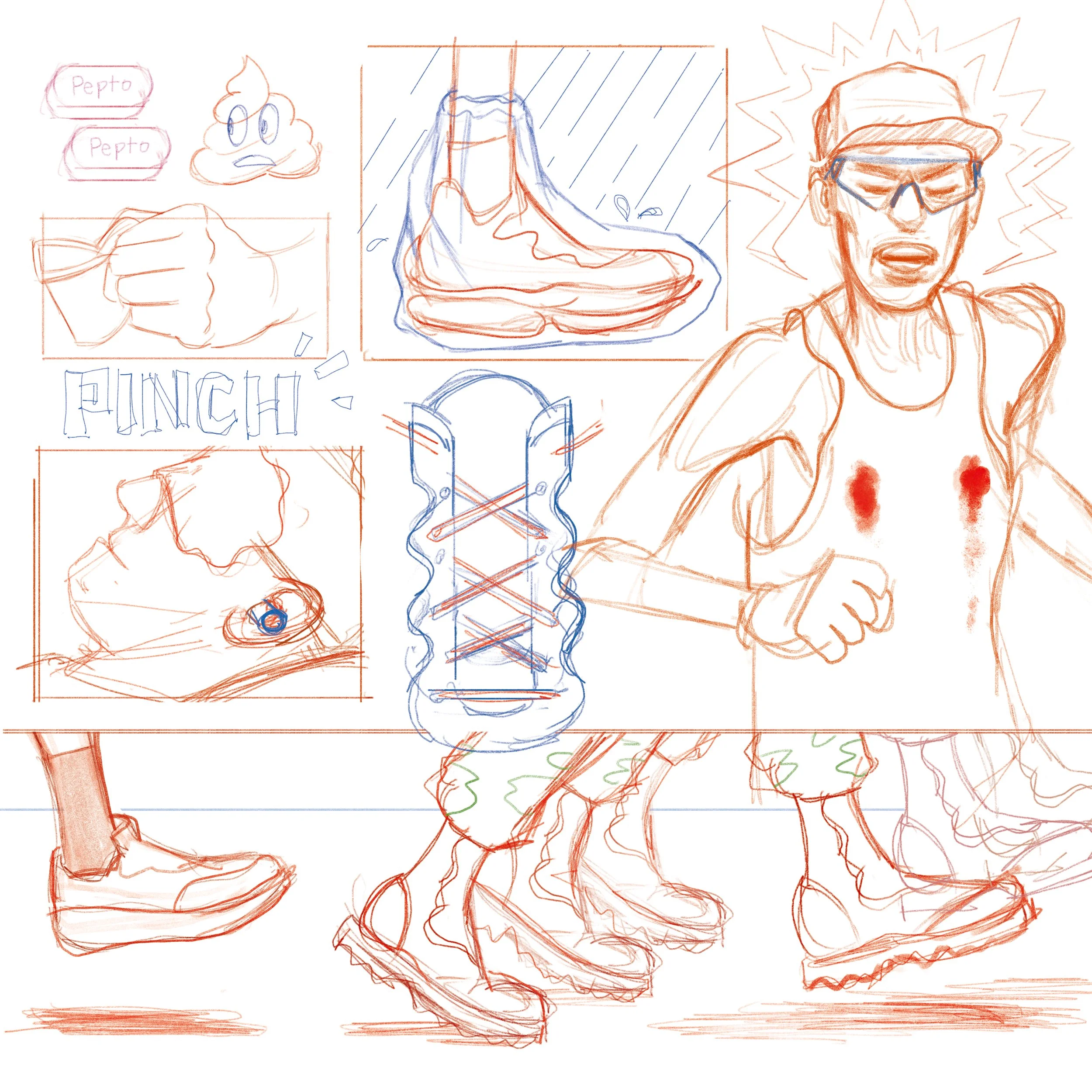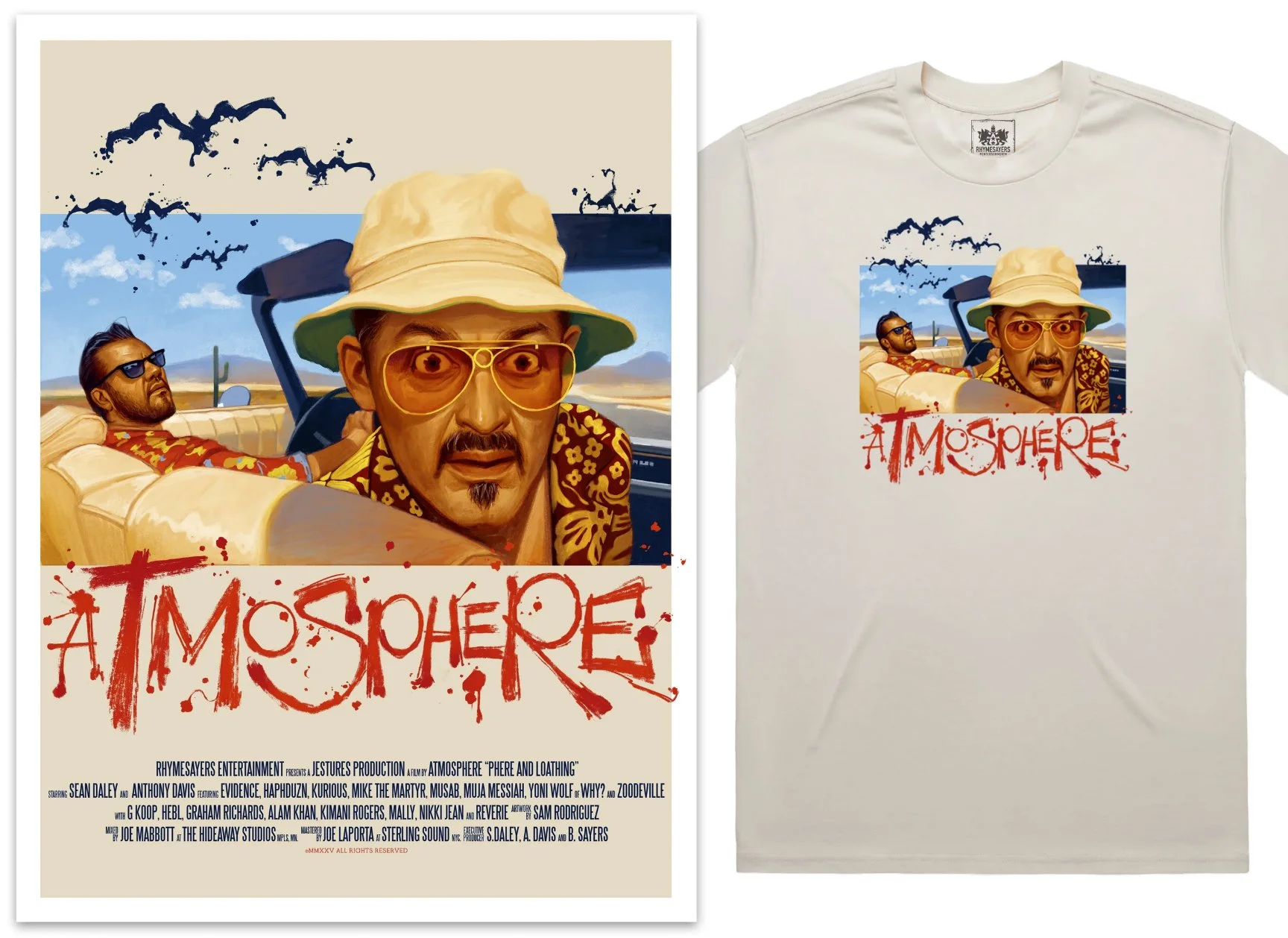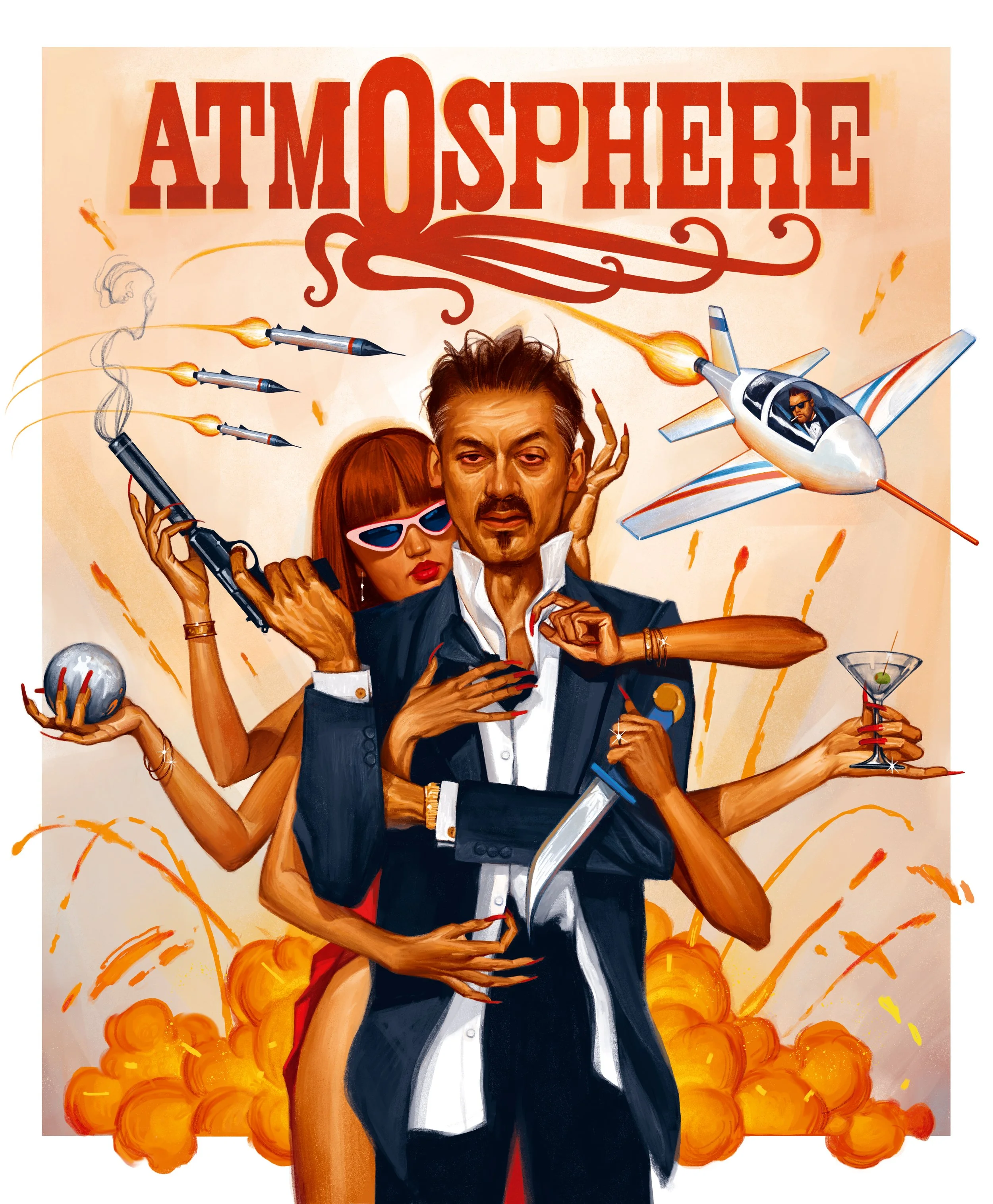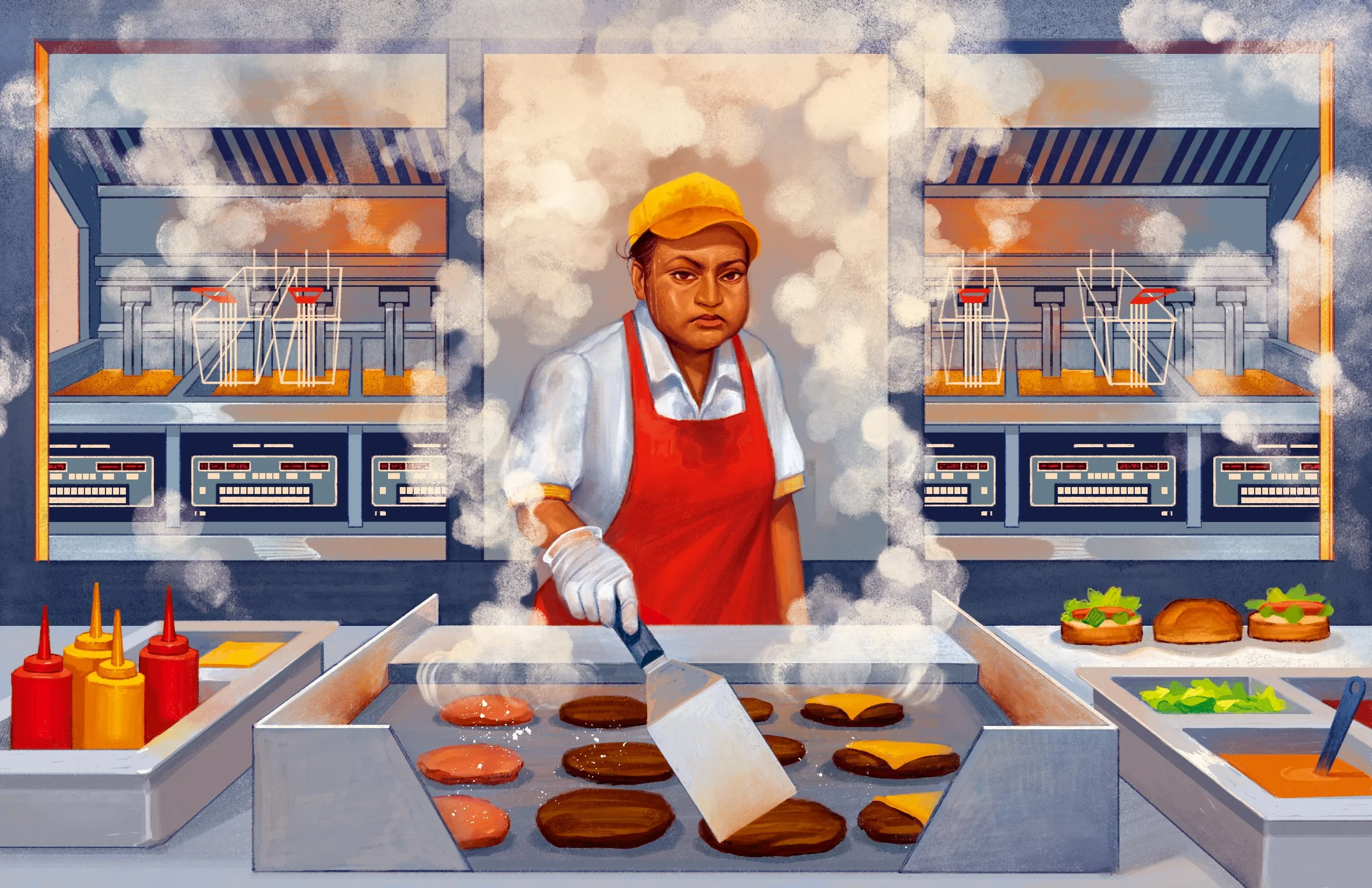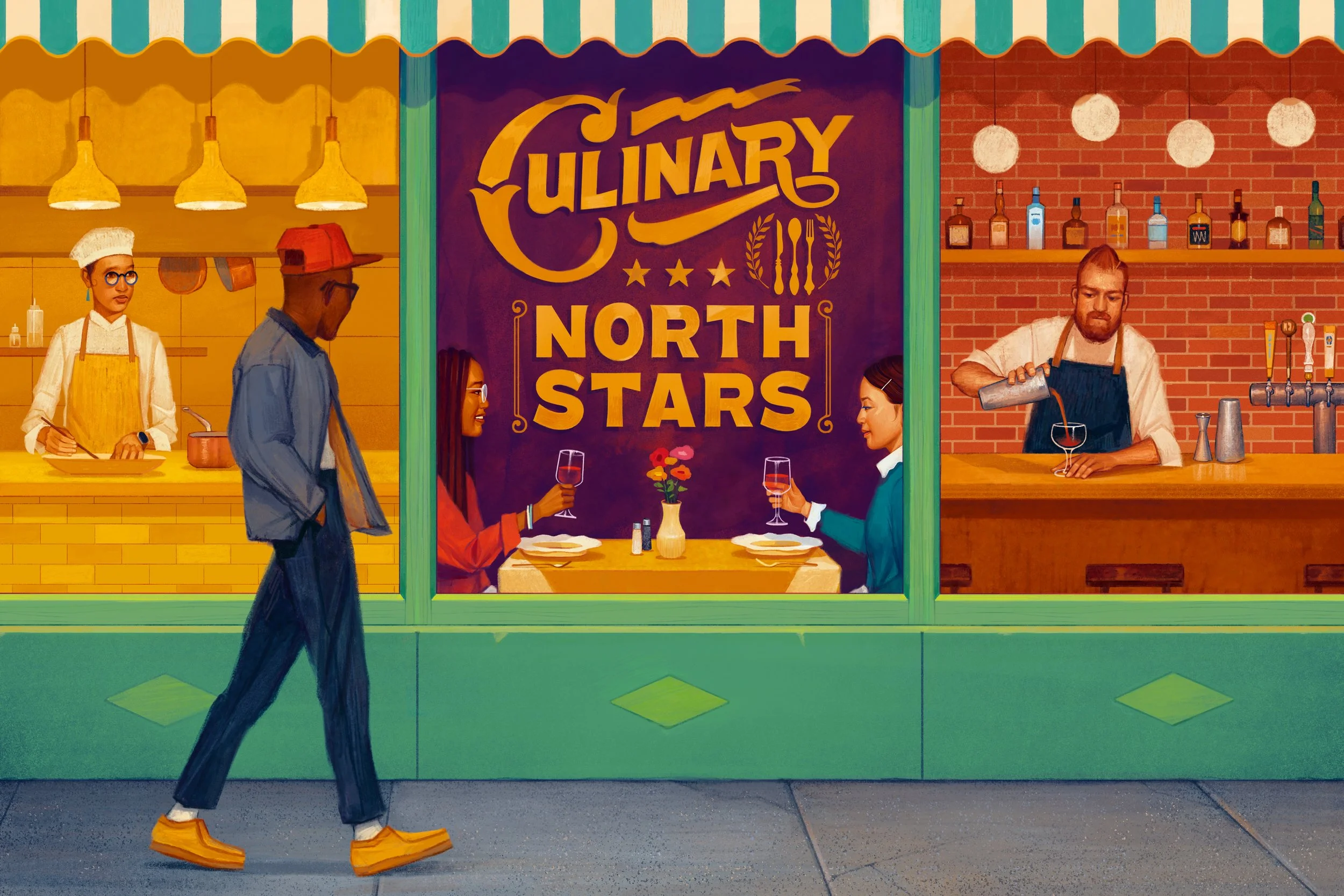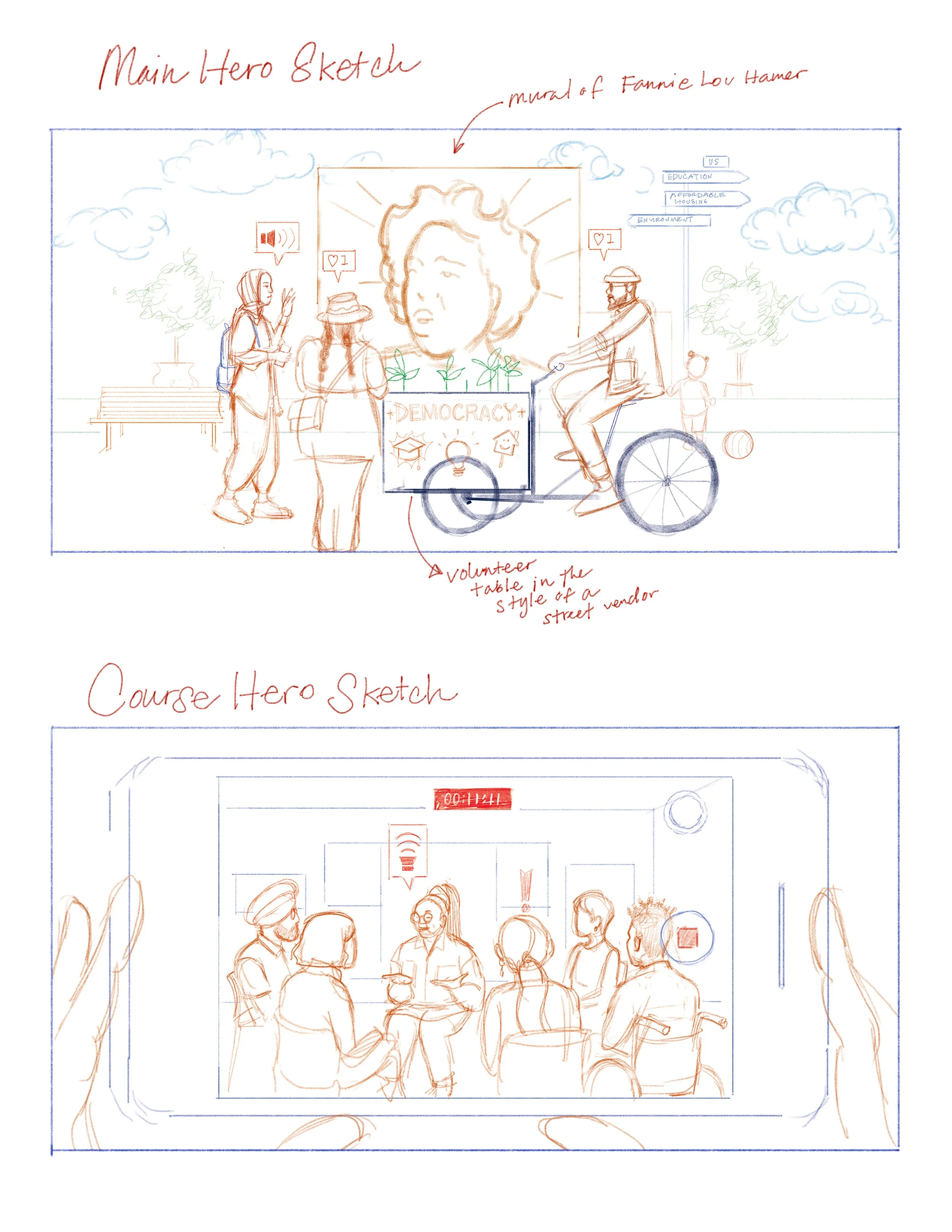I recently had the opportunity to create the commemorative poster for Working Partnerships USA’s 30th Anniversary, celebrating three decades of economic, labor, and racial justice work in the South Bay.
The artwork centers on a portrait of a young community member, symbolizing the next generation of leadership being built by those who came before. Around this central figure, community members paint and build together, reflecting the collective effort and intergenerational strength that has shaped WPUSA’s history.
Throughout the composition, I included visual elements that represent solidarity and growth — from the scaffolding that ties everyone together, to the local landscape and native plants that root the scene in the South Bay. The symbols within the piece, like the raised fist, megaphone, and sunrise, point toward action, hope, and renewal.
This project was a reminder of how creative work can honor the past while pointing toward the future. I’m grateful to have collaborated with an organization that continues to uplift workers, families, and communities with vision and heart.
